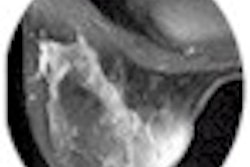The Institute of Medicine Committee on Technologies for the Early Detection of Breast Cancer's recommendations fall into two categories. The first five aim to improve the development and adoption processes for new technologies. The last five aim to make the most of technologies currently available for breast cancer detection.
- Government support for the development of new breast cancer detection technologies should continue to emphasize research on the basic biology and etiology of breast cancer and on the creation of classification schemes for breast lesions based on molecular biology.
- Breast cancer specimen banks should be expanded and researcher access to patient samples should be enhanced.
- Consistent criteria should be developed and applied by the FDA for the approval of screening and diagnostic devices and tests.
- For new screening technologies, approval by the FDA and coverage decisions by the Health Care Financing Administration (HCFA) and private insurers should depend on evidence of improved clinical outcome. This pursuit should be streamlined by coordinating oversight and support from all relevant participants (FDA, National Cancer Institute, HCFA, private insurers, and breast cancer advocacy organizations) at a very early stage in the process.
- The NCI should create a permanent infrastructure for testing the efficacy and clinical effectiveness of new technologies for early cancer detection as they emerge.
- HCFA should analyze the current Medicare and Medicaid reimbursement rates for mammography, including a comparison with other radiological techniques, to determine whether they adequately cover the total cost of the providing the procedure.
- The Health Resources and Services Administration (HRSA) should undertake or fund a study that analyzes trends in specialty training for breast cancer screening among radiologists and radiologic technologists and that examines the factors that affect practitioners' decisions to enter or remain in the field.
- Until health insurance becomes universally available, the U.S. Congress should expand the Centers for Disease Control and Prevention screening program to reach a much larger fraction of eligible women, and state legislatures should participate in the federal Breast and Cervical Treatment Act by providing funds for cancer treatment for eligible women.
- The NCI should sponsor large randomized trials every 10 to 15 years to reassess the effects of accepted screening modalities on clinical outcome.
- The NCI, in conjunction with the American College of Radiology Imaging Network or the Breast Cancer Surveillance Consortium, should sponsor further studies to define more accurately the benefits and risks of screening mammography in women over age 70.
Return to Film-screen mammography remains gold standard, IOM says



















